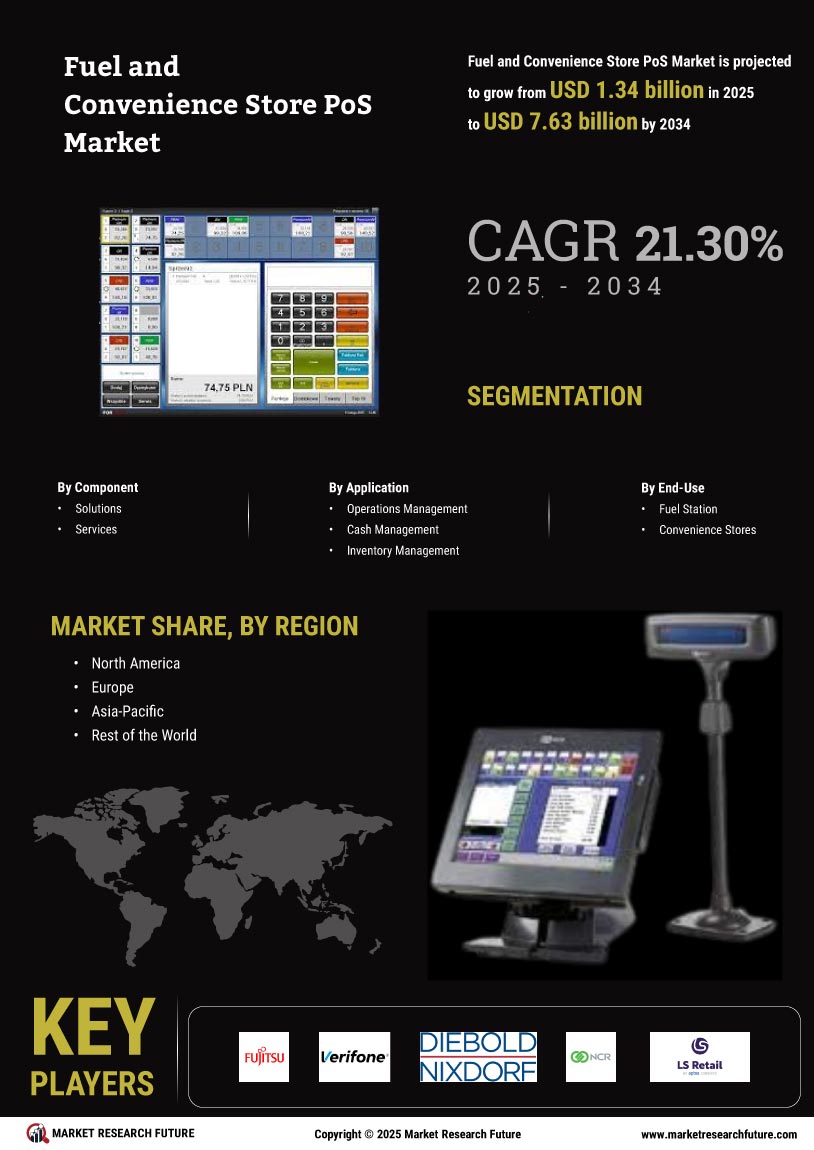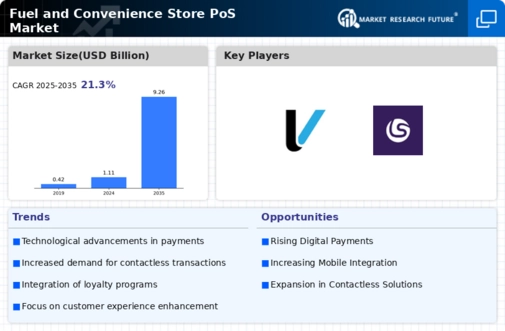Market Growth Projections
The Global Fuel and Convenience Store PoS Market Industry is projected to experience substantial growth over the next decade. With a market valuation of 1.11 USD Billion in 2024, it is anticipated to reach 9.26 USD Billion by 2035. This growth trajectory reflects a compound annual growth rate of 21.28% from 2025 to 2035, indicating a robust demand for advanced PoS solutions. The increasing adoption of technology, coupled with changing consumer preferences, is likely to drive this expansion, positioning the market for significant advancements in the coming years.
Technological Advancements
The Global Fuel and Convenience Store PoS Market Industry is experiencing rapid technological advancements that enhance operational efficiency and customer experience. Innovations such as mobile payment systems, contactless transactions, and integrated inventory management systems are becoming increasingly prevalent. These technologies not only streamline transactions but also provide valuable data analytics for better decision-making. For instance, the adoption of advanced PoS systems is projected to contribute significantly to the market's growth, with a valuation of 1.11 USD Billion in 2024. As retailers embrace these technologies, they can expect improved customer satisfaction and loyalty, further driving market expansion.
Rising Demand for Convenience
Consumer preferences are shifting towards convenience, significantly impacting the Global Fuel and Convenience Store PoS Market Industry. As lifestyles become busier, customers increasingly seek quick and efficient shopping experiences. This trend is reflected in the growing number of convenience stores and fuel stations that offer a wide range of products and services under one roof. The market is expected to grow substantially, with projections indicating a rise to 9.26 USD Billion by 2035. This increasing demand for convenience drives retailers to invest in advanced PoS systems that facilitate faster transactions and enhance customer engagement.
Integration of Loyalty Programs
The integration of loyalty programs within the Global Fuel and Convenience Store PoS Market Industry is becoming a crucial driver of customer retention and sales growth. Retailers are leveraging PoS systems to implement personalized loyalty initiatives that reward frequent customers with discounts and promotions. This strategy not only encourages repeat business but also provides valuable insights into consumer behavior. As a result, the market is likely to witness a compound annual growth rate of 21.28% from 2025 to 2035. By fostering customer loyalty through innovative PoS solutions, retailers can enhance their competitive edge in a crowded marketplace.
E-commerce and Omnichannel Strategies
The rise of e-commerce and omnichannel retailing is reshaping the Global Fuel and Convenience Store PoS Market Industry. Retailers are increasingly adopting integrated PoS systems that facilitate seamless transactions across various channels, including online and in-store purchases. This approach allows businesses to meet the evolving expectations of consumers who seek flexibility and convenience in their shopping experiences. As the market adapts to these changes, it is anticipated that the integration of e-commerce capabilities will drive significant growth, contributing to the overall market expansion and enhancing customer satisfaction.
Regulatory Compliance and Safety Standards
Regulatory compliance and safety standards play a pivotal role in shaping the Global Fuel and Convenience Store PoS Market Industry. As governments worldwide implement stricter regulations regarding payment security and data protection, retailers are compelled to upgrade their PoS systems to ensure compliance. This necessity not only protects consumer data but also fosters trust and credibility in the marketplace. Consequently, the demand for compliant PoS solutions is expected to rise, driving market growth as retailers invest in technologies that meet these evolving regulatory requirements.

















Leave a Comment